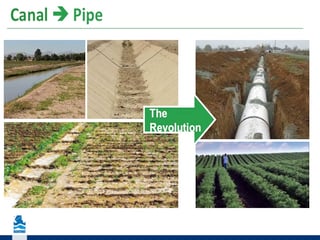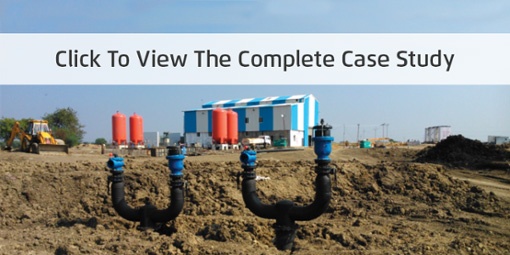While canal systems were once effective for irrigation and traditional farming in India and used for hundreds of years, modern technology together with heavy subsidies from the local governments in India, has made pressurized pipe systems, with SCADA control a better and more effective option.
There are a number of factors that differentiate the two technologies, but our work with Saisanket in India proved first-hand the massive effect a modernized system can have on optimization and steady supply of water to local farmers.
A Few Differences between Canals and Controlled Pressurized Systems
When Saisanket, supported by Israeli modern technologies, established their operation in the lift irrigation market, (especially BERMAD control valves), they found systems which were old, badly maintained, and the water supply had poor quality and only flowed for a few hours a day.
By offering the lift irrigation system design based on a pressurized system, with control valves and SCADA systems, they were able to achieve a number of critical benefits:
- Improved water use efficiency to 95%
- Ensure equitable distribution of water across the land, meaning 24/7 hydraulically balanced service for each farmer.
- Enable the use of water meters, with flow and pressure control features, which helps monitor and control usage.
- Bring computerized irrigation and SCADA systems to the end users and co-op managers
- Provide system ready for drip or sprinkler irrigation to the local family farmers
Ultimately, moving to a pressurized system allows water to travel end-to-end in a matter of minutes as opposed to a potential multi-day cycle with canal systems, while saving on waste of area, reducing civil engineering costs and allowing central water filtration.
How BERMAD Introduced Automation to the New Pressurized System
Our part in the Saisanket project design was to specify, develop and provide a BERMAD Pressure Flow Control Metering Device (PFCMD) in the new automation system to:
- Reduce filling rate and draining of pipelines
- Maintain the system design requirements
- Monitor and control volumetric irrigation (as opposed to "by time" irrigation)
- Control air in the system.
If you want to dig deeper into the details of the Saisanket project and how the automated irrigation system made the irrigation project far more efficient, download the free case study, India Lift Irrigation Systems.. 








